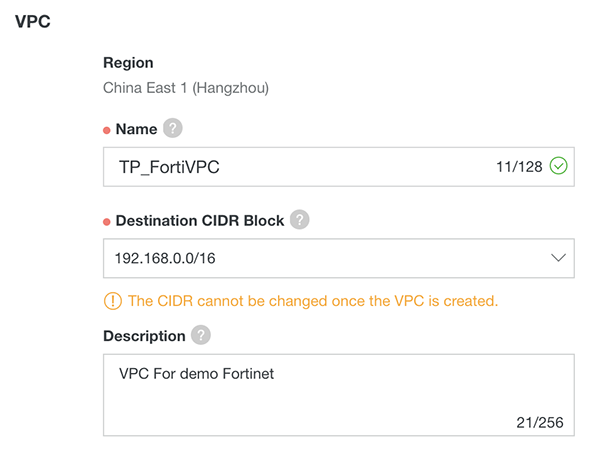

On top of that we will add virtual machine.

Now, during deployment, Fortigate will create and configure virtual network and subnets we defined, put together routing and deploy the VM. Ok, I put emphasis on networking for the installation part, because it is most important, you get to select other parts like VM size (depends on license you have) names, users and passwords. I will select static and name it TestFortiPublicIP My virtual network has a range of 172.16.0.0/22 and I have two subnets within that network – public subnet on 172.16.0.0/24 and private subnet on 172.16.2.0/24 Ok, now most important part – networking. On a first screen you will select a name for your Fortigate install, user, pass… I will select Resource group I earlier created and I selected BYOL 6.0.3 for the Fortigate version | OK (of course, you will need to download Fortigate VM if you haven’t yet) Next go to the Virtual machines | +Add | Networkingīrowse until you find Fortigate NGFW – Single VM Deployment (BYOL) Not the prettiest name in the world, but it will server purpose. I created resource group named “1FortiTest0”. You will need empty resource group to deploy your Fortigate installation to. This tutorial assumes you have basic knowledge of Azure infrastructure. I will highlight most important parts, not every detail of the installation. Whole virtual network is in range 172.16.0.0/22Īzure Stack is using default network configuration and everything it adds is standard for Azure Stack – public IP in range DNS server for VMs on address 168.63.129.16 Fortigate Installation You will also need a license for Fortigate (trial can be requested for Fortinet, or you already bought one) (Use Marketplace version or your own image) Windows Server 2016 Dtcntr trial for testing purposes.

Prerequisitesįor this tutorial I will be using followingįortigate Single VM Deployment BYOL (from Azure Marketplace) v 6.0.3 (download it from Marketplace) Here is my tutorial for Fortigate installation in Azure Stack. VM I add to the Fortigate can ping and access Fortigate installation, can see other VMs in same network, but cannot access internet or ping anything outside local network. Installation of Fortigate VM would go great, my Fortigate installation is accessible from the internet and it can ping internet. This is my story on Azure Stack (v 1.1910.0.58) Here is a Fortigate Cookbook for Azure – As usual I went through a lot of documentation, done everything by the book – but no luck for me. I saw a lot of posts around the internet with similar problems, but none of them with solution. I had a problem that VMs that I assigned to my Fortigate installation could not access internet. Fortigate installation on Azure (Stack) should be a piece of cake according to documentation and internet, but for me – it isn’t.


 0 kommentar(er)
0 kommentar(er)
